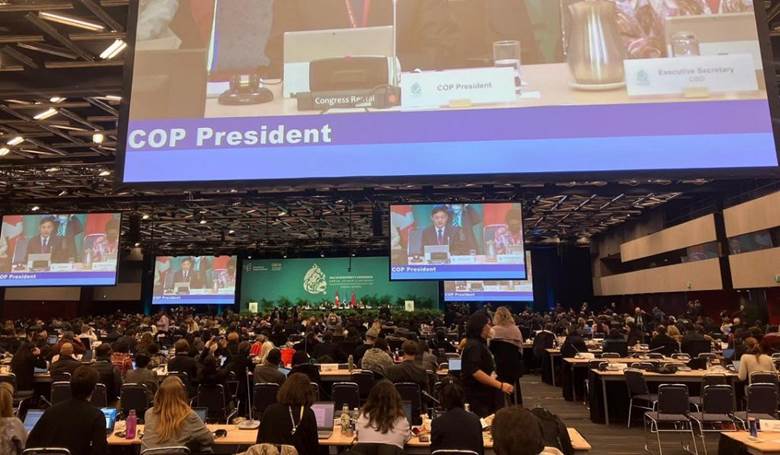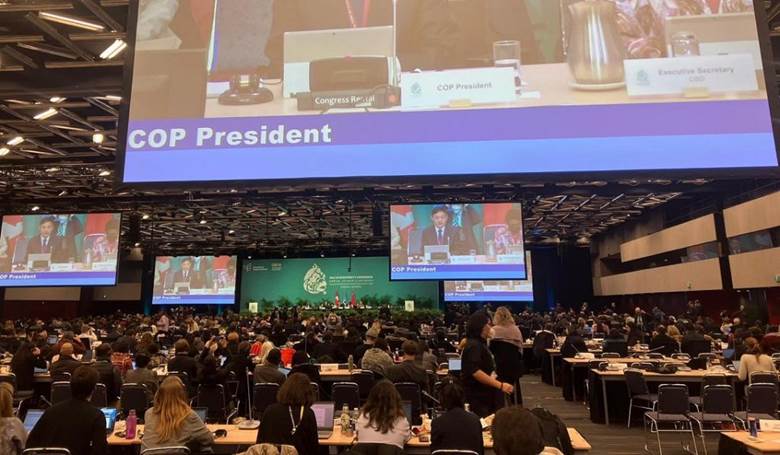Description

Copyright infringement not intended
Context: The 15th Conference of Parties (COP15) to the UN Convention on Biological Diversity (CBD) adopted the Kunming-Montreal Global Biodiversity Framework (GBF). The framework has 23 targets that the world needs to achieve by 2030.
Details:
- The targets are ambitious, considering that biodiversity is in a poor state. In 2020, the world had failed to meet the last set of targets, the Aichi Targets. Countries would need to ensure success this time round.
- Due to the COVID-19 pandemic, adoption of the new targets is already delayed by two years leaving lesser time for the countries to achieve the targets.
- COP15 had representatives of 188 governments on site and agreed on the framework that hopes to arrest the ongoing loss of terrestrial and marine biodiversity.
- Clear indicators to measure progress have been set to avoid the failure as seen in the Aichi Targets.
- The countries will monitor and report every five years or less on a large set of indicators related to progress.
- The CBD will combine national information submitted by late February 2026 and late June 2029 into global trend and progress reports.
- The Global Environment Facility has been requested to establish a Special Trust Fund to support the implementation of the Global Biodiversity Framework (“GBF Fund”). This is to ensure successful implementation.
- Delegates have agreed to establish within the GBF a multilateral fund for the equitable sharing of benefits between providers and users of digital sequence information on genetic resources (DSI), to be finalised at COP16 in Türkiye in 2024.
- Despite an objection from the Democratic Republic of Congo, which is home to lush tracts of rainforest, the Chinese presidency and Canadian host government declared the deal approved.
CONSERVATION, PROTECTION AND RESTORATION
- Delegates committed to protecting 30% of land and 30% of coastal and marine areas by 2030, fulfilling the deal’s highest-profile goal, known as 30-by-30.
- Indigenous and traditional territories will also count toward this goal, as many countries and campaigners pushed for during the talks.
- The deal also aspires to restore 30% of degraded lands and waters throughout the decade, up from an earlier aim of 20%.
- And the world will strive to prevent destroying intact landscapes and areas with a lot of species, bringing those losses “close to zero by 2030”.
.jpg)
MONEY FOR NATURE
- Signatories aim to ensure $200 billion per year is channelled to conservation initiatives, from public and private sources.
- Wealthier countries should contribute at least $20 billion of this every year by 2025, and at least $30 billion a year by 2030.
- This appeared to be the Democratic Republic of Congo’s main source of objection to the package.
BIG COMPANIES REPORT IMPACTS ON BIODIVERSITY
Companies should analyse and report how their operations affect and are affected by biodiversity issues. The parties agreed to large companies and financial institutions being subject to “requirements” to make disclosures regarding their operations, supply chains and portfolios. This reporting is intended to progressively promote biodiversity, reduce the risks posed to business by the natural world, and encourage sustainable production.
.jpg)
HARMFUL SUBSIDIES
Countries committed to identify subsidies that deplete biodiversity by 2025, and then eliminate, phase out or reform them. They agreed to slash those incentives by at least $500 billion a year by 2030, and increase incentives that are positive for conservation.
POLLUTION AND PESTICIDES
- One of the deal’s more controversial targets sought to reduce the use of pesticides by up to two-thirds.
- But the final language to emerge focuses on the risks associated with pesticides and highly hazardous chemicals instead, pledging to reduce those threats by “at least half”, and instead focusing on other forms of pest management.
- Overall, the Kunming-Montreal agreement will focus on reducing the negative impacts of pollution to levels that are not considered harmful to nature, but the text provides no quantifiable target here.
MONITORING AND REPORTING PROGRESS
- All the agreed aims will be supported by processes to monitor progress in the future, in a bid to prevent this agreement meeting the same fate as similar targets that were agreed in Aichi, Japan, in 2010, and never met.
- National action plans will be set and reviewed, following a similar format used for greenhouse gas emissions under U.N.-led efforts to curb climate change.
- Some observers objected to the lack of a deadline for countries to submit these plans.
MUST READ:
https://www.cbd.int/doc/c/e6d3/cd1d/daf663719a03902a9b116c34/cop-15-l-25-en.pdf
https://www.downtoearth.org.in/news/wildlife-biodiversity/cop15-kunming-montreal-global-biodiversity-framework-adopted-86654












